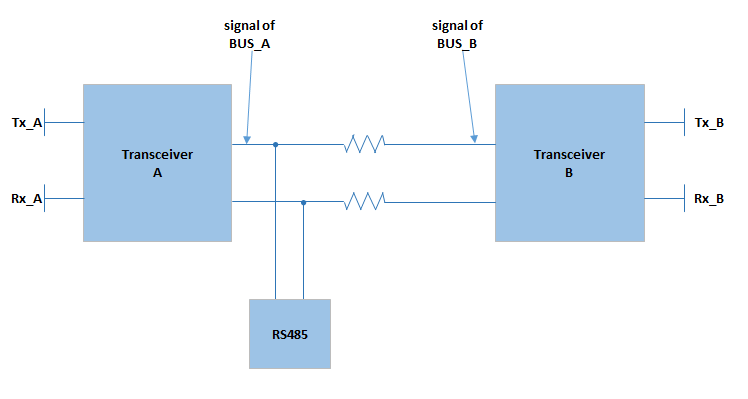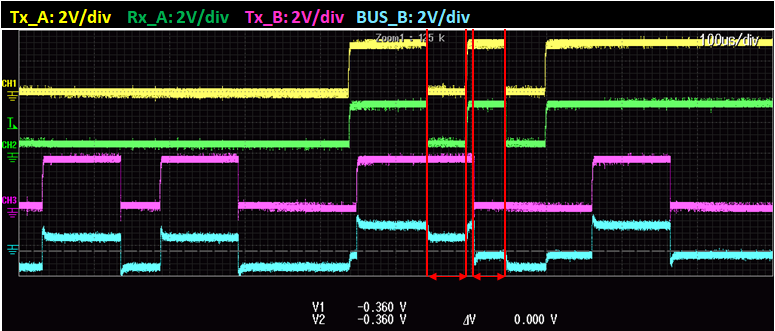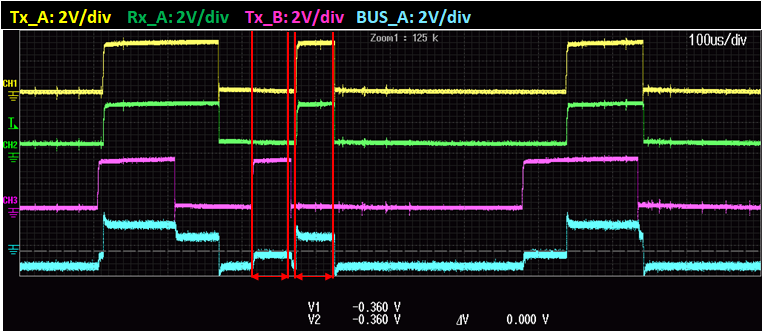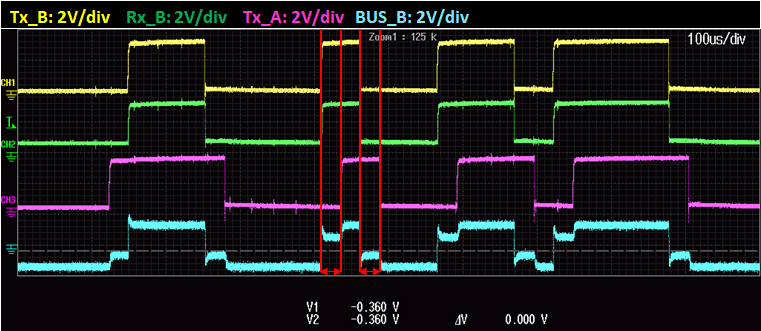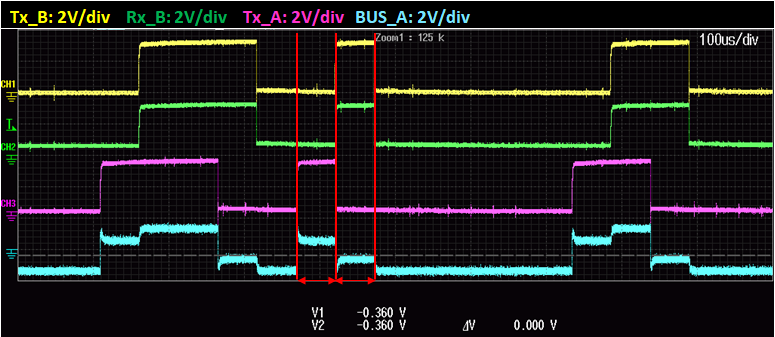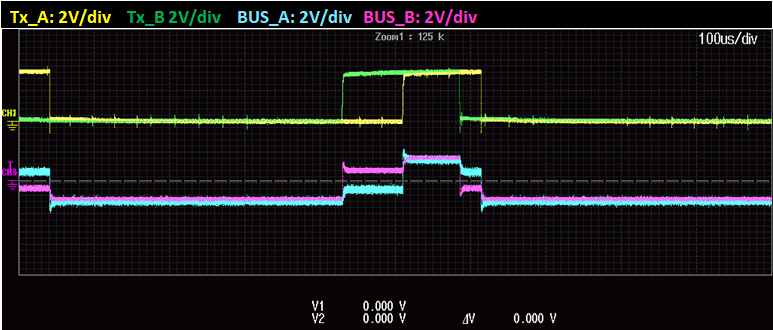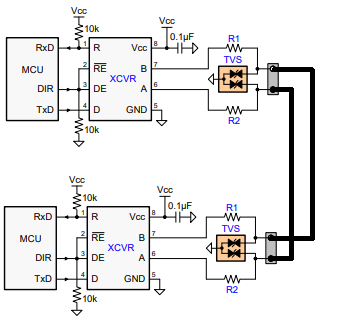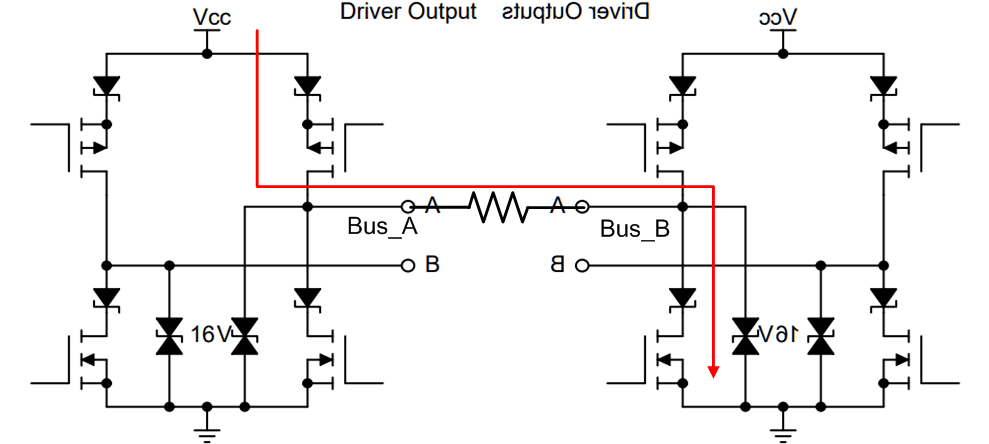Hi TI,
As the title, we need to figure out why this problem happened in this case. Thanks.
1. System as follow: The length of cable is 300 meters, equivalent line resistance is 27 ohm.
2. Experiment situation: Two transceivers sent Tx simultaneously to RS-485.
3. Problem: Abnormal voltage level measured while Tx of one transceiver was high and the other was low. This problem caused Rx of two transceivers were different.
4. Waveform measured: (Tx and Rx signal were measured by passive voltage probe, and BUS signal were measured by differential voltage probe. )
a) Rx_A should be the same logic as BUS_B
b)
c)
d) Rx_B should be the same logic as BUS_A
e) When the logic of two transceiver were different, the BUS signal went different as well
Regards,
Zach


